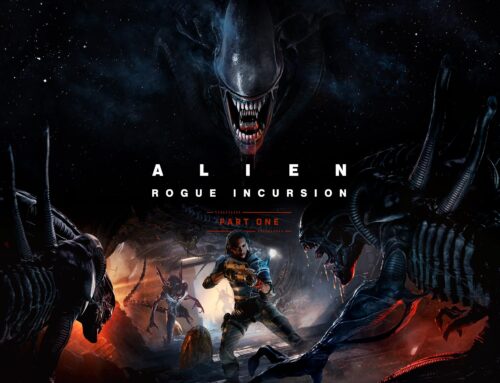After experiencing the amazing virtual reality game, Nevermind, which debuted at ScareLA this a few weekends ago, I was inspired to write a review of the experience while HorrorBuzz’s Jeff took a look at the panel. After the fact, as luck would have it, I was able to speak to the mastermind behind the experience herself, Erin Reynolds. She is the creative director, and founder of the gaming design company Flying Mollusk. With HorrorBuzz, Erin discusses the inception of her creation, applied psychology in gaming and what types of exploration we can expect to see in this relatively young, brave new world of virtual reality entertainment.
HORROBUZZ: How did you first get the idea for Nevermind?
ERIN REYNOLDS: Nevermind started as my MFA thesis at USC in the Interactive Media and Games Division of the School of Cinematic Arts. During your thesis year, you essentially get to work on any project you’d like – basically spending a year to make your dream project. With that, I knew I wanted to create a game that leveraged biofeedback-based interactions (something I had explored a couple of years prior) while also “giving back” to the player. In other words, a game that was just as beneficial as it was entertaining. I also wanted to make it a darkly surreal experience – as I had always wanted to create something within the horror genre but hadn’t had the opportunity to do so previously in my career. These three goals were the seeds from which Nevermind would grow – working with an extraordinary team of professors, advisors, and fellow student developers the rest of Nevermind evolved from there.
HORRORBUZZ: How has the game affected those who have been through traumas? Any memorable positive/negative reactions?
ERIN REYNOLDS: The version of Nevermind that we’re currently working on (which is a full-fledged revamp and expansion of the academic version I previously spoke of) is not necessarily intended to be played by those who have undergone a traumatic experience and/or are sensitive to narratives around traumas. Instead, one of our goals is to help place those who haven’t experienced trauma in the shoes of those who have – to abstractly and metaphorically evoke the experience and aftermath of a traumatic experience and to communicate just how diverse and personal trauma experiences can be to an individual. To this end, we hope that Nevermind can help expand awareness of the breadth and complexities of psychological trauma – providing insight into trauma and PTSD while also, in a sense, humanizing it.
With all that being said, we are very excited about the potential of creating a specialized version of Nevermind that can be used within a therapeutic setting and is appropriate for players who may have PTSD, clinical anxiety, or any other specific considerations of that nature. After the current version of Nevermind is released, we intend to work even more closely with behavioral health experts, medical professionals, academic researchers, etc. to develop a version of Nevermind that explores the potential therapeutic applications of the concept.
HORRORBUZZ: Any thoughts about the future for Virtual Reality and/or what you would like to explore with Nevermind?
ERIN REYNOLDS: I think Virtual Reality opens up the doors to so many new experiences that we, as an industry, haven’t even thought of yet – it’s a very exciting time to be making and playing games. As someone who is especially interested in “positive games” (games that entertain and give back to the player), I’m especially excited about the opportunities that come from the incredible sense of immersion that VR affords. We certainly plan to explore those opportunities within the VR version of Nevermind – and it’s something that I suspect I’ll be experimenting and playing with, so to speak, for many years ahead!
Many thanks to Erin Reynolds for her attention and thoughtfulness. This has definitely illuminated the project for us here at HorrorBuzz. I know I can speak for many when I say we look forward to future works from Flying Mollusk and will eagerly stay tuned!
—
To try the biofeedback game yourself, you’ll want to check out Nevermind on Steam.
For general info, stay tuned to Nevermind and Flying Mollusk.
One Comment
Leave A Comment
You must be logged in to post a comment.










Kickstarter campaign was wrapping at the same time Entropy was launching, and Erin Reynolds, the game s lead designer, was one of the first people I reached out to for a possible interview.